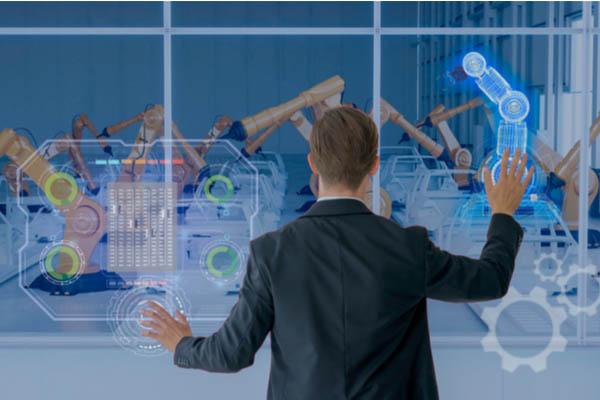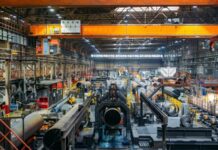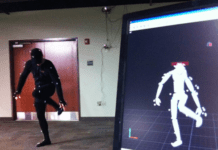
Since the boom of technology & automation, many companies have opted to change how they conduct business. It has become easier to streamline and automate certain processes for efficiency in the the workplace. Especially logistics and parcel companies turning to modes of automation so that they can meet the demand of e-commerce. McKinsey’s recent report, Automation in Logistics: Bigger opportunity, bigger uncertainty, explores some of the main reasons why automation is changing the industry and how it can present new obstacles that business owners have to tackle.
A very important aspect that logistics organizations need to consider is machine learning. It has become an essential type of technology and the company’s efficiency depends largely on this. Many experts, including the McKinsey report, are revealing that automation should be on top of the list of logistic’s CEOs’ agendas. This is based on three factors: a growing shortage of labor, increasing demand from online retailers, and intriguing technological advances. If logistics companies do not make the move very fast then they could end up with escalated problems that could easily have been avoided. The consumer demand is not getting any smaller.
According to McKinsey Global Institute, the transportation and warehouse industries have the third-highest automation potential in comparison with any other sector. The Institute found more than 50 technologies that could further automate a part of the supply chain. These include advanced robotics in warehousing, analytics for transport, and IoT/smart-sensor applications. Not only are these necessary for increasing the efficiency of production but it also allows companies to move with modern times and not get left behind. This, however, leads to one of the most crucial questions that these companies face: which type of technology will produce the greatest return on investment?
The research has shown that today’s automation systems are more flexible than ever before. One example is fast-picking systems that can handle 1,000 – 2,400 picks every hour. This is mainly because of the advanced vision technology that allows them to handle objects in arbitrary positions. This type of technology makes it easier for the entire company to produce and manufacture goods to their true potential. It empowers warehouses in particular to handle fast-changing multichannel and omnichannel requirements. At the same time accelerate and support same-day and day-to-day deliveries.
Estimations show that by 2030 most operations could be automated because by then AI solutions will be readily available to most companies. This type of technology will take over more repetitive and mundane tasks that humans had to carry out. The McKinsey report shows that warehouses could even experience fully automated vehicles patrolling the aisles. Managers can equip themselves with augmented reality glasses and this will enable them to have full visibility of the operation from wherever they are. It can assist with the support and the coordination of movement. Warehouse management will also be more efficient as this type of technology can assist in keeping track of real-time inventory recording.

These are the 10 technologies that McKinsey believes could transform warehouse operations:
- Multishuttle system: This is used with an automated storage and retrieval system that transfers items on pallets. It works in three dimensions and eliminates human intervention when it comes to storing and retrieving.
- Analytics tool: This uses an algorithm to allow operations for analysing the performance of workers or supervisors, identify trends that have taken place or are currently taking place, make predictions that can assist in making operation decisions, and use machine learning to improve certain processes over time.
- Optical recognition: This technology uses a sensor to scan items. It then applies sortation and any other logistic processes that might need to happen. It includes items like a conveyer’s laser-guided vehicle and camera-based movement for drones. It adds to the overall efficiency of the logistics processes.
- Conveyor connection: Conveyors can often be a tricky part of the warehouse processes and it often happens that conveyors are not in sync with each other. A conveyor connection is a connection between two disparate conveyors systems that use decision logic to influence item flow and efficiency of the conveyors.
- Management system: Managers are not always aware of every single process that is taking place on the warehouse floor and a management system helps them to have eyes everywhere. Analytic & digital systems combine performance reporting, analytics, and forecasting tools so that managers can easily control a full system like an entire warehouse.
- Smart storage: Storage is often a problem in a warehouse because of the vast space that is occupied. Smart storage makes use of analytics and digital tools to make retrieving and storing easier. It adjusts storage media based on the product, picking, and the order characteristics.
- 3D printing: 3D printing is a technology that has become familiar to many companies and homes over the past few years. Many business owners are already implementing it in their working environment. This is a process that creates parts by adding layers of material, like metal or plastic, to develop a certain shape. 3D printing is also known as additive manufacturing.
- Swart AGV robots: Logistics companies all over the world are already employing what is known as AGV robots. These are autonomous vehicles that can operate freely in an area and on digital tracks to bring items to a picking station. It operates based on instructions from order-flow software.
- Smart-glasses: Smart glasses have been marketed in the entertainment industry but business owners have employed it across all sectors to improve efficiency in the workplace. These glasses make use of augmented reality technology and assist the reality of users. It especially helps in reducing the inefficiencies of searching. Supervisors and managers are also enabled to offer full-time support when wearing smart glasses that are connected to their workers.
- Picking robot: This is a type of robot that replaces the need for humans to pick up something. It has robotic arms and a human picking motion to move items in a warehouse.
7 April 2020























